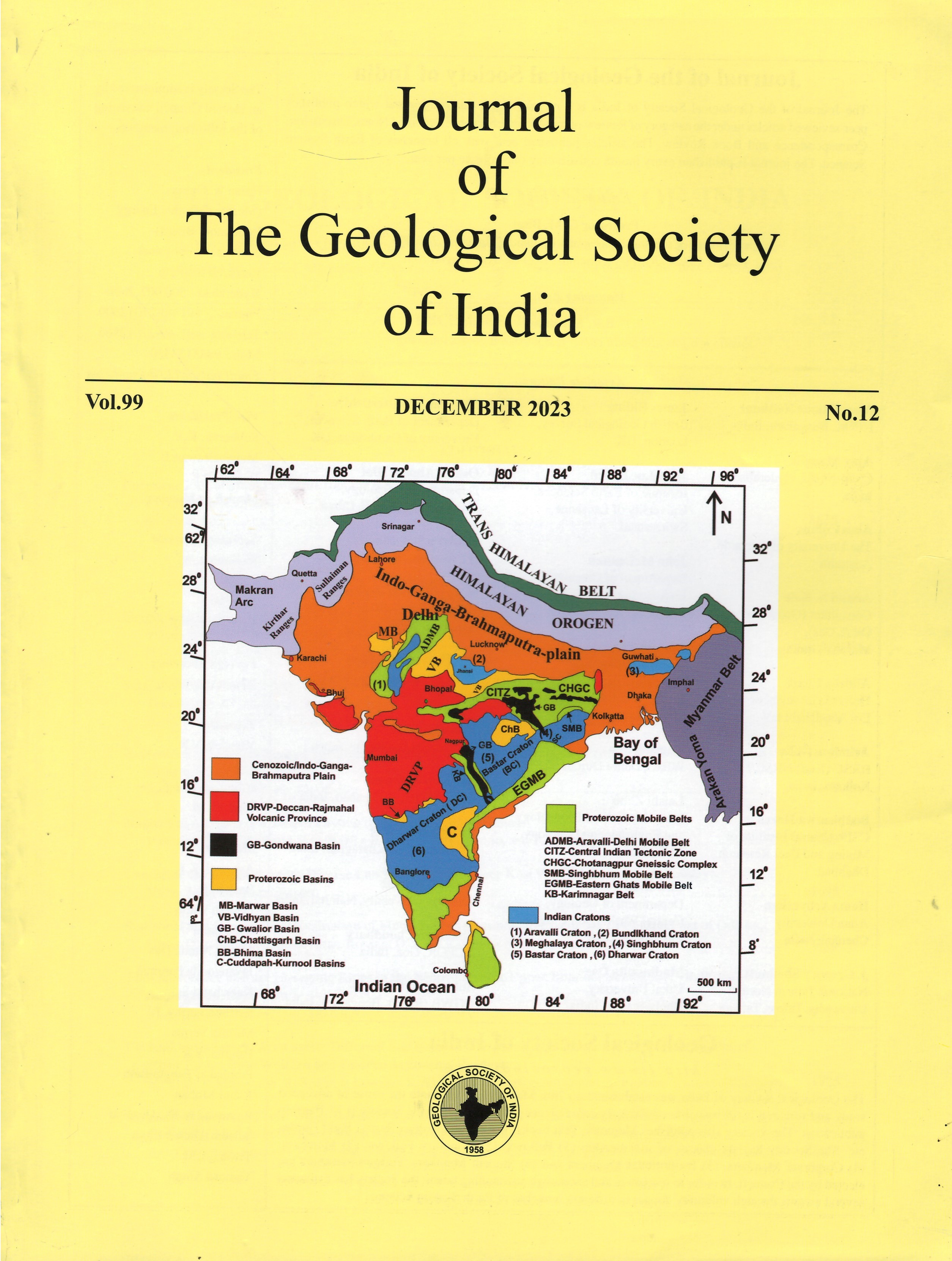Decadal Variations in Area under Different Soil Erosion Classes using RUSLE and GIS: Case Studies of River Basins from Western and Eastern Arunachal Pradesh
DOI:
https://doi.org/10.1007/s12594-023-2528-1Keywords:
No KeywordsAbstract
This study provides a comparative evaluation of spatio-temporal distribution of soil erosion in Western (Mago Basin) and Eastern (Dibang Basin) basins of Arunachal Pradesh, India as these two basins are vulnerably exposed to soil erosion due to its topographical characteristics of mountainous steep slope and experiences heavy rainfall. The study was carried out for a ten-years period (2003 to 2014) using RUSLE model which encompasses five important factors contributing to soil erosion. Rainfall erosivity (R factor) map was calculated using Climate Prediction Center gridded precipitation. Soil map and soil samples were used to analyze soil erodibility (K factor) map. Slope length and slope steepness (LS factor) maps were computed from SRTM DEM (30 m resolution). MODIS NDVI images were used to obtain cover management (C factor) map. Landuse Landcover map was used to obtained support practice (P factor) map. Higher value in rainfall erosivity and cover management factor was observed in Mago basin which contributed to higher average annual soil loss of 17.423 t ha−1 y−1 in Mago basin and 5.461 t ha−1 y−1 in Dibang basin, whereas the other three factor values were almost the same. The spatial maps showed 56.65% of Mago basin area and 76.27% of Dibang basin area was under the class of slight erosion, with the remaining areas of moderate to severe erosion risk for both the basins. Temporal average soil erosion in Mago basin varied within moderate to very high erosion classes whereas Dibang basin erosion classes varied from slight to moderate. The temporal trend line showed that the overall soil erosion was increasing at an alarming rate for Mago basin whereas a slight increase in Dibang basin was observed.

 M. Vese
M. Vese






